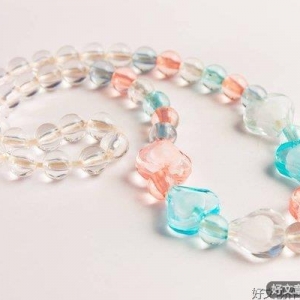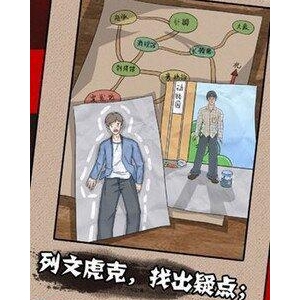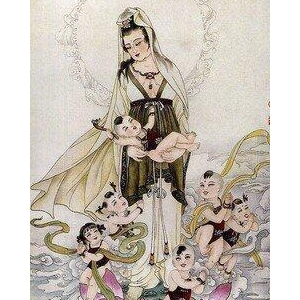
《现代性及其不满》是一本由[美]史蒂文·史密斯著作,后浪丨九州出版社出版的精装图书,本书定价:88.00元,页数:528,特精心从网络上整理的一些读者的读后感,希望对大家能有帮助。
《现代性及其不满》读后感(一):现代性的二重身
本书以人物为纲的写作结构令其内容与我已读过的《科普勒斯顿哲学史》和《剑桥政治思想史》部分分卷以及《反启蒙》诸书有所重复,毕竟这个主题下总有一批绕不开的思想巨匠。但本书作者在人物遴选仍颇具个人特色,独具慧眼地选取了三部文学文献:《包法利夫人》(福楼拜)、《豹》(兰佩杜萨)和《塞勒姆先生的行星》(索尔·贝娄)。特别是对后者精华的提炼令人眼前一亮,这就提醒我们在研究现代性问题时不应忽略文学家的表述,虽然他们的观点往往分散而不那么直观地揉入叙事文本中,但借小说人物之口,他们对社会变迁和精神困境的洞见并不逊于职业思想家。
在对那批耳熟能详的思想大家的解读中,我在以赛亚·伯林的章节收获最大。作者作为施特劳斯的弟子,对反启蒙的定性无疑比泽夫·斯汤奈尔要温和得多。他指出,大多数反启蒙并非主张反对甚至取消理性、回归蒙昧,他们对西方传统的呼唤和重新挖掘,终究是为了充实启蒙运动,补充和维持现代性的理论与实践。这也本书标题中“不满”的由来,“不满”并不意味着反动(“反启蒙”),意味着倒退回去,而是:『 我们只是更加直言不讳地表达我们的愤懑。这种对自身的不满本身就是身为现代人之意义的一部分。我们是,或者至少正在成为,我们不满的总和。』
《现代性及其不满》读后感(二):马基亚维利对于现代政治的意义
“所谓有效真理,他值得是关于‘是’的知识而非关于‘应当’的知识,是关于事物如何世纪运作而非关于它们应当如何的知识·······”
“马基亚维利尝试单独通过政治生活本身来确定政治生活的规则,而非让规则屈服于道德、神学或形而上学的要求。”
马基亚维利主义虽然被人所诟病,但放在历史中有着其积极意义,且程度巨大。他的理论是主管上期望基于客观人类行为活动的事实而产生的,这也开创性的让人类政治从过去中世纪受宗教与道德铁律等影响中剥离出来。因此马基雅维利也是现代政治科学的重要奠基人,他的理论以新的视角的形式影响了包括马克思韦伯、马克思等众多现代政治学者思想。
他的核心观点是基于“有效真理”的理论,有效真理本质上区别出了“客观真理”与“主观真理”的不同。虽然主观认识对与人类社会有着重要意义,但认识客观真理是人类走向世俗性、科学性、商业性的前提保障,也是西方近代新教伦理与资本主义精神的产生必经之路。
但正如历史中所有革命都会产生矫枉过正的情况一样,马基亚维利同样也从中世纪宗教主义政治走向了反面的极端,那就是绝对的客观主义,为了遵从人类的原始行为本质,而大张旗鼓的鼓励“不为善”,这在本质上是忽略主观精神价值中的道德与信仰世界的表现。认为道德只是人类的虚伪而不切实际的产物。这是今人对其理论多有责备的根本原因。
但并不能因此否定其对于人类,特别是现代政治科学的巨大贡献,他如历史中所有的革命运动一样,在来回的矫枉过正中让历史的钟摆始终前行。
《现代性及其不满》读后感(三):社会伦理道德及其个人道德的演变
这本书无论是从马基雅维利《曼陀罗》易变的自我,到笛卡尔的《谈谈方法》、霍布斯的政治哲学和自然法、斯宾诺莎普遍信仰的矛盾性、富兰克林的大众社会、康德的自由人权主义、黑格尔的市民社会,以及卢梭的反启蒙、托克维尔的多数人暴政、福拜楼的反资产阶级美学、尼采.施米特对物化社会,即资产阶级的末世想象、以赛亚伯林的自由主义社会和斯特劳斯的生活哲学探讨.....都是围绕着由启蒙运动——“科技、进步和商业”——发展带来的,对产生现代性不满&和为何会有这样现代性不满的发展论述。
走进这些大家们所提出的思想,和随着社会发展变化带来的对当时提出这些思想的批评和怀疑,就是在走进他们所处的当代社会背景,就是去看见所有这些从启蒙运动开始发生的科技,进步,商业,文明、政治、哲学、文化,艺术发展变化背后,带来的其实是社会伦理和个人道德标准的演变和变化。就像我们今天正在遭遇的价值真空和道德真空的矛盾二重身现象,就是如此之下演变过来的。
但非常明确的是,反启蒙不是启蒙的对立面,而是一个并存的二重身现状。就像现代性并非一个需要克服的问题,而是一个需要面对的挑战一样。对现代性的不满,确切地说,对现代性的异化,本身就是一个典型的现代现象。对现代性的两面——启蒙运动及其反启蒙批评,现代性不仅包括了相互竞争的并非单一面向,还包括它自身连续性与中断性的这些共存问题的思考,就是参与现代性反思的一种进步表现。
就像全书结尾句说到的那样,”我们生活在混合的文明中,它是由相互竞争的启蒙和反启蒙各派别所构成,而这些派别使得理性和科学所具有的解放力量看起来愈发虚幻。而进步叙事永远不能完全摆脱其二重身,我们也将永远被我们的各种不满所困扰——而这是一件好事”。
《现代性及其不满》读后感(四):A Book Review
注:这个review是当时某门研究生课课程的作业,写作时间差不多在原书出版后不久。大概是首次写那么长的英文内容,文字方面可能会不太够看,但鉴于是多年前的东西(甚至我都忘了里面具体写了些啥),也懒得再改了...
既然现在中译本已经翻译出版,还是放出来供有需要的人参考。
------
Steven Smith’s recent book, Modernity and Its Discontents: Making and Unmaking the Bourgeois from Machiavelli to Bellow, examines one central topic in contemporary political philosophy, modernity. For Steven Smith, the core question in this book is: how did the idea of the bourgeois, once considered virtually synonymous with the free and responsible individual, become associated with a kind of low-minded materialism, moral cowardice, and philistinism?
The content of the book is organized into four parts clearly: the first part is a brief introduction examining the development and the dialectic of the modernity, its origin, development, and the rising of its opponents; the second part consists of classic authors of early modernity and the analysis of their texts, including Machiavelli new manner of individualism, secularization of society raised by Hobbes and Spinoza, the creation of the modern idea of the self by Descartes and Benjamin Franklin, the international humanism of Kant, and the morality of the civil society by Hegel; the third part, examines the great critics of the modern project, from Rousseau’s critique of the culture of the refinement and the arts, Tocqueville’s account of two kinds of new despotism, Flaubert’s diatribe against the modern bourgeois, Nietzsche’s undermining of the idea of progress and his influence on Georges Sorel, György Lukács, Martin Heidegger and Karl Schmitt, Isaiah Berlin and Leo Strauss on the reconsideration of the track of the modernity, and at last two literary images of modernity provided by Giuseppe di Lampedusa’s The Leopard and Saul Bellow’s Mr.Sammler’s Planet. And fourth the conclusion part.
1.The Outline
How modernity comes to rise and how the modernity develops its opponents, are the central questions of this book. The etymological analysis of the term “modernity” shows that it first gained its appearance in the “quarrel between the ancients and moderns” over the proper ways of artistic production which quickly becomes a debate involving the issues ranging from philosophy, politics to economics. For the author, the modernity is more associated with a particular type of human being, the bourgeois. The typical bourgeois, not refers to a particular kind of production in Marxism context but means a certain way of life and set of moral characteristics, can be characterized as an individual with the quality of generosity, courage, nobility, love of fame, and self-assertion[1]. America is founded on the basis of modern philosophy and acceptance of the bourgeois morality. While the question is, as the history of political thought shows, how the rhetoric of modernity develops in the development of the modernity? How the once virtuous bourgeois is considered with materialism, moral cowardice, and philistinism?
The book begins with the examination of the concept of modernity. The term “modernity” itself indicates a distinction to the previous ancients, while the beginning of the modernity remains a question. If we regard modernity as mentality, when does it exactly begins? It depends on the standard. Some traced it back to the age of exploration and the discovery of the New World, others to the scientific revolution by Harvey, Galileo, and Newton, or to the philosophical innovations of Descartes, Hobbes, and Spinoza. Some identified it with the social and political revolutions in England, France, and the United States. Even others identify it artistic and aesthetic developments to certain writers like Proust, Joyce, and James.
More disputes are associated with the coherence of modernity. It is believed by on influential opinion that we no longer have full confidence on modernity about the faith that the development of science, politics and law could serve as a model for humanity. Documents like the French Declaration of the Rights of Man and the Citizen and Universal Declaration of Universal Human of the United Nation proposed a universal society facilitating the health, safety, and prosperity of its citizens. But nowadays it receives attacks from other thoughts. Marxism and postcolonialism regard it as a Western imperialism imposing its way of life to the rest of the world. Historicism or relativism views these claims as a disguised kind of particularism. The September 11 attacks destroyed the utopian belief that the end of the Cold War follows the period of democratic peace. The resurgent nationalism and ethnic tribalism also break the belief that we all become liberal democrats. These problems force us to return to the beginning of modernity, i.e., the quarrel between the ancients and the moderns.
Machiavelli is the first author who confronts the quarrel in a systemic and comprehensive manner. Although the language of Machiavelli remains replete with biblical allusions, his realism put politics in a new foundation, free it from the illusions of the imagination, and provides a “lower” conception of human nature that better described the actual human behavior. And armed with right science or the right understanding of nature and history, we can free ourselves from dependence on fortune. And the ancient belief of endless cycle of history is altered by a program of progress. Progress involves a preference for the present over the past and demands transcendence. The scientific revolutions of the sixteenth and seventeenth centuries provided evidence for this belief. Science for the first time is seen as a cumulative enterprise, an accretion of knowledge that is in principle illimitable. Along the belief of progress is the critique of theological politics, the once unquestioned authority of the church over the worldly authority became the target of the attack, religion regarded as the origin of turmoil and is requested obey the guidance of the government. Later, this critique served as the presupposition of the emergence of the national states. The states are sovereign in the sense that they control their own affairs including religion, which put an end to the universal church and build the new international system. The sovereign individual also emerged, people no longer considered to be affiliated with organizations like family, polis, guild or religious order but free and equal “by nature.” The individual also becomes the source of moral and political authority. The central claim of the Enlightenment was the belief that the increase in knowledge will necessarily lead to a better condition of society. The founders of modern philosophy explained modern politics in a long struggle of ascent from the state of nature to civil society, i.e., an original condition of fear and anxiety, poverty and ignorance replaced by way of a social contract protecting person and property. Civil society, distinctive from natural society, is immersed with property, science, and commerce. The progress itself inevitably involves the revolution in the modern sense. Revolution gained the meaning as a driving force of historical development, not the ancient idea of returning.
Paradoxically, while the modernity is considered related to the ancient-modern quarrel, another side of the debate, if the debate exists, is not the ancient, but the counter-enlightenment. Historians have shown that modern concepts and categories are dependent on earlier Christian ideals. The counter-enlightenment, the term usually associated with Isaiah Berlin about the romantic reaction to the Enlightenment, here describes the movement of reconsideration and deepening of the idea of modernity itself. Each moment of modernity confronts its following counternarrative. The secularization of institutions give rise to fears about the rationalization and “disenchantment”; the market economy and the commercial republic is accompanied with an antibourgeois mentality; the idea of individuality and free subjectivity give rise to concerns about homelessness, anomie, and alienation; the achievements of democracy are together with fear about conformism, the loss of independence, and the rise of the “lonely crowd”; even the idea of progress faces the antithesis of the decadence, degeneration, and decline. The aim of counter-enlightenment, however, is not the restoration of the old order but the creation of a new order. They started as a reaffirmation of the nation as something higher than cosmopolitanism, the particular conceived as something greater than the universal.
The origin of the counter-enlightenment is also the subject of the debate. One convenient landmark is the Rousseau’s Discourse on the Sciences and the Arts. The aim of the First Discourse is not to condemn the development of the sciences and the arts, but to protect them from the inevitable vulgarization that uses them serving for the public education.
The enlightenment began with the ancient-modern quarrel, while the counter-enlightenment began as a movement of opposition or reaction against the two core ideas of modernity—science and commerce. Science is asserted to limit the power of the imagination in metaphysical affairs and commerce to tame and pacify the passions and appetites. The new commercial regimes are believed to provide a safe and fair alternative to the ancien régime. At the core of the Counter-enlightenment was a critique of a new kind of civilization, the bourgeois civilization.
The bourgeois itself presented a contradiction. It is between the natural man and the citizen, between desires and duties. Marx introduced the Bourgeois into the political vocabulary and told his story about the modern history of its struggle with the proletariat, but Marx did not hold a completely negative opinion on the bourgeois because of its early heroic struggle against the feudal aristocracy. It is Nietzsche who brought the hatred toward the bourgeois. Nietzsche traced the bourgeois civilization to its philosophical origin, the British philosophy. His portrait of “the last man” in the mass democracies fulfilled only with the passion for comfortable self-preservation. Nietzsche and his last man got great disciples among European philosophers like Martin Heidegger and Carl Schmitt, regarding the democratic world and the parliament government filled with superficial opinions and meaningless chatter.
But the decadence of the democratic future and the hatred toward the bourgeois is only one version of the counter-enlightenment story. Authors like Tocqueville and Leo Strauss hold a critical view on modernity while did not radically reject the modernity at all. Tocqueville was skeptical of the middle-class democracies for its materialism, love of comfort, and belief in unlimited progress. But he saw the possibility of certain civic virtues based on the ethic of self-interest. The civic virtues, unlike the aristocratic virtues involving nobility and self-sacrifice, includes virtues such as cooperation, moderation, tolerance and self-mastery. Leo Strauss refused the modern association of Plato and totalitarianism and took great seriousness to revive the classical political thought. He did not simply regard the ancient as an alternative to the modern at hand or a resource providing ready-made answers but insist the possibility of the premodern thought to providing support for modern democracy. His thought on the liberal education suggested the image of the ancient “mixed regime.” The liberal education aimed at nurturing and the preservation of the “gentlemen” who could serve as a mainstay against the pressure of mass culture.
2.The Method
The main body of the book consists of the selection of important figures in the development of the thesis and the antithesis of modernity, A detailed text analysis of their works, not limited to the argument made by the author, but also focus on authors’ intention with the attention to the writing style and the arrangement of the argument, trying to understand the work as a whole. In the analysis of Descartes’ Discourse on Method, unlike common reading of the book concentrating on its philosophical contribution of responding to the revived skepticism and regarding it the philosophical foundation of modern knowledge, the main idea is about the moral import of the work. According to Smith, Descartes deliberately chose the form of an autobiography in order to show an exemplary life of self-discovery. The reason of the publication of the Discourse comes from a desire to benefit the public as Descartes believed his work would procure the public good by providing his new ethics of humanity and generosity. Instead of going straight to look at the Cartesian proposal of the new way of understanding, the analysis faithfully followed the writing order which started with the story of the education of a young philosopher. Then the Descartes’s proposals for the reform of the understanding, his concerns about the practical consequences of the new method, and the brief tour to his metaphysics and physics. The analysis showed, although Descartes say nothing directly about the ethical implication of his making human the “masters and possessors of nature”, his aspiration to autonomy and self-sufficiency is an analogue to the Machiavellian princely self-creation: Machiavelli suggest the possibility for a prince to outwit fortuna and Descartes implies the mastering of one’s own fate.
Another example is the analysis of Hobbes’s critique of religion in the third part of Leviathan. Most readings of Hobbes have focused on his first two parts of Leviathan, “On Man” and “On the Commonwealth”, in which Hobbes presents his theory of the state of nature and the social contract, while neglected the third and the fourth part, “Of the Christian Commonwealth” and “Of the Kingdom of Darkness”, in which Hobbes presents his critique of the religion and the Christianity. This kind of neglect, according to Smith, results in the loss of the theological dimension of Hobbes. Only the recent interest in political theology turned some readers to these parts of Leviathan and the role of religion in Hobbes’s theory. Instead of the opinion that Hobbes’s attention to religion is accidental or reading of Hobbes as a theorist of natural law, the critique of religion consists the core of Hobbes’s political philosophy. His aim was to rebuild the foundation of the religion so that the spiritual and temporal power could be united. In Leviathan, Hobbes actually provided two analyses of religion, one natural account, and the other prophetic account. In his natural account, Hobbes traced the origin of religion back to men’s curiosity about the cause of things. Men’s ignorance of causes results in anxiety and fear, which gave rise to the imaginary powers that human believed as the arbiters of our fate. Religion in this account is a projection of the imagination as a result of fear. The disposition of fear and anxiety by Hobbes was turned into the virtually universal experience of all mankind in the state of nature. The fear was redirected for the sovereign. The stability, prosperity, and even civil liberty provided by the sovereign helped to alleviate this kind of fears. It is based on this fear and anxiety that Hobbes created the bourgeois morality, a morality aiming at avoiding pain and violent death with the endless pursuit of desire. While more important is Hobbes’s prophetic account of religion which consists of twelve chapters of the second half of Leviathan, compared with two chapters of his natural account. The reason why Hobbes contribute great volume on this issue is that Hobbes fully understand the scripture offers the deepest, the most profound challenge to the claims of a scientific politics. He had to show the irrelevance between the religious teaching and reason but not the contradiction. Whereas his critique on the Kingdom of Darkness refused the authority of the clergy and provided the possibility of the sovereign power, his skepticism reserved the room for faith by limiting the reason. As a tolerationist understanding of Hobbes suggested, his worship consist of the combination of outward abeyance and inner freedom.
Although the main method of this book is the detailed analysis of the text, this book not restricted to it and cannot be simply perceived as a Straussian history of the idea of the modernity, which excluding everything except major works of exceptional political philosophers. On the contrast, this historical tracing back also includes figures and their works like Benjamin Franklin and his Autobiography which is commonly read as an American literature. Famous readers of Franklin like Max Weber and Lawrence read Franklin and his Autobiography wrong because they fail to see the irony, the humor and the sheer joie de vivre[2] in this work, which results in a wrong interpretation of Puritanism from Franklin as Weber did in his Protestant Ethics and the Spirit of Capitalism. According to Smith, this book should be read as a book of education, which is a story of self-improvement, involving the appreciation of fallibility and the imperfection of human being. Franklin provided his plan for the religious and moral reform and raised a new standard for them with the principle of toleration and the bourgeois morality, based on his pragmatism and his belief in progress and improvement. Although he did not mention politics directly, Smith analyzed that Franklin endorsed a conception of politics based on the ideas of progress and civic improvement. Best politics for Franklin is the politics which could achieve its goal through bloodless means of persuasion and negotiation, and his ideal party is the precursor of the modern political parties which includes the formed opposition.
Beside untraditional figures, works that are traditionally regarded not central to the understanding of political thought are also contained, such as the play Mandragola by Machiavelli. In his analysis of Mandragola, Smith illustrated how Machiavelli altered the virtue of individual. Machiavelli exercised his morality not only in the political and the public, he also altered the virtue of the private life. The play Mandragola itself is a comic retelling of Roman history, the rape of Lucretia. By contrasting the image of Lucretia and Lucrezia, Machiavelli successfully established his own virtue for the private life. In the Roman history, Lucretia is the victim of the rape and committed suicide for the dishonor, which provided a chance for Brutus to show his talent, exile the Tarquinius family and build the Roman Republic. In his play, Machiavelli turned the story upside down. Lucrezia became an eager participant in the deception of her husband. The young Tarquin who dishonored Lucretia was replaced by Callimico who lived as an expatriate for twenty years to escape the wars. The ancient morality of the honor and dignity is replaced by a modern morality of pursuing only the happiness. The play itself showed a conspiracy, a theme that is the same to the famous long chapter on conspiracy in the Discourses. As Machiavelli dealt with public or political conspiracy in the Discourses, he dealt with the domestic conspiracy in Mandragola in the form of the play. Analysis of the play suggested that the play itself showed a hierarchy of conspiracy by attributing characters with different degrees of perceptions and capacity for manipulation. The play itself showed the “reborn” of Lucrezia: she who seems to be a passive figure who simply accepted governance of others deliberately chose the usurpation with Callimico. It is called a “reborn,” because the “reborn” of Brutus in the ancient Roman story is just a reveal of his nature and through the “reborn” of Lucrezia Machiavelli showed the virtue of Lucrezia, the Machiavellian virtue consists of audacious, bold and controlling. The coming of a new birth at the end of the play suggest the birth of modernity: it begins as an act of conspiracy, and the illegitimacy of its true parentage will not be noticed.
When it comes to the camp of discontents to the modernity, several works of one author or a group of authors are analyzed together. In chapter 12, the Apocalyptic Imagination: Nietzsche, Sorel, Schmitt, the arrangement of the argument is no longer around one specific work. The writing is alone the affinity of author’s theory: the nihilism, the critique of modern science and technology, and the critique of disenchantment and rationalization. Following this line, Smith linked Nietzsche, Lukács, Heidegger, Horkheimer and Adorno, Sorel and Schmitt. Although analyses of text still exist, more part of this chapter consists of the analysis of key concepts and their affinities.
3.Critic
The aim of this book, as stated before, is to revitalize the debate between the modernity and its discontents for the benefit of our times, because the author believed the modern project is at stake. While we admit that the author presented points from each figure successfully, the writing of the book lacked the sense of debate. This shortcoming is partly because of the inconsistency of the modernity and its discontents, but the research method author adopted also contribute to this problem.
If we accept the assumption that these authors are in the same arena of modernity, whether they are precursors, pillars, critics or “discontents,” there should be the possible dialogue or the debate between their opinions. But since the argument of the author is primarily based on detailed text analysis, few concentration have been paid to this aspect. Look at the theme of the first three chapters of Part two. These three chapters dealt with three important figures in the modernity project, Machiavelli, Hobbes, and Descartes. The analyses of their arguments are isolated with each other in some sense: after the analysis of Machiavelli on the virtue of the women and the family, the book turns to the Hobbesian critique on religion, and later the moral implication of Descartes’ ego and the characteristic of Discourse on Method as an autobiography. The modern moral standard, religious critique, and the self-identity, of course, are three important issues for the modernity, while we can see few connections between them except the idea of the modernity in author’s analysis. We can agree that the modernity is complex and presents itself in many aspects, but the author did not provide summaries to them. After all, the book is titled with “modernity” and thus is expected to present the modernity as a whole, but not mere a represent of opinions on modernity.
The selection of the texts results in the discontinuity of the story. A traditional story of the modernity will also begin with Machiavelli, not focus on his Mandragola but his The Prince and Discourse and the discussion of his political thought; and following the discussion of Hobbes will focus on his social contract but not his religious critique. It sounds like a kind of cliché, but this kind of writing provides the continuity of the story. While Smith’s selection of authors and texts are untraditional which includes figures and works not central in traditional history. This kind of arrangement is helpful to broaden the landscape of modernity but results in the fragmentation of the story.
The gap is most obvious when Smith finishes his discussion of part 2 and turn to the part 3, finishing the discussion of modernity and turn to its discontents. After analysis of Hegel, the book abruptly turned to Rousseau who was earlier than Hegel. Smith could reason that they belong to the different side and it is reasonable to put Rousseau after Hegel because modernity reached its peak in Hegel and Rousseau is the first who gave the counter-enlightenment its voice. But Smith did not provide detailed information about the context for Rousseau, then we cannot know what exactly Rousseau is discontent for, and the reason why he is discontent.
Smith’s book is a Straussian reading of the question of modernity, and he succeeds in presenting opinions of figures he selected by detailed analyses of the text. But it is doubtful if he has reinitiated the debate because the debate needs the comparison and the contrast of the argument from each side, which is seldom shown in the book. Moreover, to understanding a debate means not only the issue and the argument but also its cause, i.e., why to debate. To say how modernity originates from the ancient-modern quarrel and to explain why modernity would originate from the quarrel are two different things. They are also two different things to analyzing the reasoning of the argument itself and the analyses of why the author would postulate in such way.
So, to conclude, Smith’s book failed in three aspects: first, he does not conjoin the arguments from different authors; second, he does not present the scene of the debate and the two sides of the debate in a clear way; third, he does not analyze the cause of the debate. These three shortcomings can be overcome if the story is written by other method paying attention to the context, like the method applied by Cambridge school. What would a story of modernity from Cambridge school be and what is the potential benefit? There would three possible advantages.
First, by putting the argument back to its historical context, we can better understand its origins. As Smith wrote in the introduction part, the debate about modern was initially from the ancient-modern quarrel, a literary debate about whether the rules of aesthetics and literary composition since Aristotle should still be obeyed. The spread of the debate to religion, science, morality and politics happened in certain context. By rebuilding the historical environment, the quarrel may not be “absurd”[3] to us. And we can see clearer how the basic belief of modernity is established, how it is novel from the previous thought. It also applies to author’s analysis on Machiavelli. The author compares Machiavelli to the ancient Roman, but this kind of comparison cannot show the novelty of Machiavelli correctly since the latter are so far away from Machiavelli. As a man of Renaissance, Machiavelli was immersed in the environment of Renaissance humanism and his contemporaries also committed themselves to the revival of classic legacy. To understand Machiavelli stands out from his contemporaries and contribute to the creation of the modern morality we should put him back to his context with his contemporaries.
Second, the context provides the arena for the debate so that we can see the key points of the debate. In presenting Rousseau’s argument on sciences and arts, Smith has mentioned the Encyclopédistes and the Republic of Letters, who actually held opposite opinion to Rousseau, but he did not develop his discussion. It is not enough to just describe the situation and the influence of the Republic of Letters, but how exactly they reshape the taste and the morality of the public and what their arguments are. If we had the perception about the opinion of the role of the arts at that times, we could better understand the standpoint of Rousseau. But Smith did not do so. Instead, he provides a comparison of Rousseau to Plato, a comparison aimed at showing the similarities and the divergence of the ancient and the modern. We can see the difference between Rousseau and Plato in this way, but this difference is not the issue of the debate and comes like a castle in the air with no foundation. If the object of comparison is the Republic of Letters, we can see what points are Rousseau against because the Republic of Letters is the so-called modern.
Third, by rebuilding the context of arguments, we can see clearly the development of the debate and the dialectic of modernity. Modernity is not a building built in a day and consistent at all times, it developed in the historical process and had its discrepancy. Smith provided pieces of the building and took pictures of the architecture at different times, but it is different from showing the process of construction and a documentary of modernity. Modernity as a project is achieved through generations of thinkers, the central issues of modernity emerged from certain historical context. The theme of modernity transits with the time passed. The opponents of modernity also faded in in certain context. Argument of modernity is always the argument of some aspects of modernity, disembedding the arguments from to their context and we will lose the whole story. On the contrary, putting the argument back will help us to recognize the picture. If modernity can be described with certain adjectives like individuality, toleration, progress, etc., by rebuilding the context of arguments we can figure out how these features of modernity come out. It also contributes to the understanding of the counter-enlightenment. How religious critique aimed at secularization met its antithesis of rationalization and “disenchantment”, individuality meaning self-liberation turned to the rhetoric of alienation, and democracy gave its way to democratic despotism, can be understood if we put the issue back to its historical context.
4.Conclusion
Steven B. Smith examines the concept of modernity by presenting the thoughts of great minds. He adopts the method of detailed analysis of text, a Straussian way of doing the history of political thought, to conduct his research. As a result of his research method, modernity under his evaluation is more a state of mind than a historical product. He succeeds in presenting distinctive characteristics of modernity including self-determination and progress. He also provides a clear-cut image of important critics and opponents against modernity. But his story is with shortcomings. This book is not so successful in reinitiating the old debate of two sides, and the analysis of each character are isolated to each other. As a result, the trajectory of development of modernity and the rising of its anti-rhetoric is not so clear. If we conceive this work as an attempt of depicting the opinions regarding modernity, it is a great book. But if we want to see how modernity developed through a historical process, the arrangement and the method of this book may not be suitable. This kind of story would be possible by adopting the method of Cambridge school. By putting more weight on the historical context of modernity and its transition, we would trace the development of modernity more easily.
[1] Smith, Steven B. Modernity and Its Discontents: Making and Unmaking the Bourgeois from Machiavelli to Bellow. Yale University Press, 2016. Preface X.
[2] Ibid, Page 113.
[3] Ibid, Page 6.























